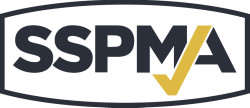How Homeowners Can Halt Basement FloodingFrequently, homeowners don’t think about their sump pump until it’s no longer working and there’s water damage. Properly educated, there are steps they can take that will help avoid costly mishaps.
Sump Pump Maintenance Tips Every three or four months: Clean the pump screen or inlet opening. If your sump collects the discharge from an automatic washing machine, cleaning will be required more often. Before removing the pump, be sure to disconnect the unit from electrical power and reconnect after completing cleaning. Then, pour enough water into the sump to cycle the pump and assure its proper functioning. Annually: Remove and clean the pump. Clean the sump pit also. Unless your pump instruction manual specifies otherwise, no lubrication or other maintenance will be necessary. Water Alarm Install a water alarm that detects water leaks before they cause costly property damage and/or mold growth. Simple leaks from water heaters, sink drains, broken washing machine hoses (the #1 cause of water damage in homes) or clogged air conditioner drain tubes are immediately detected. Place an alarm wherever there is risk of water damage — utility room, laundry room, kitchen, bathroom or basement, or crawlspace. Battery Backup Sump Pumps A battery-backup sump pump can help keep their basement from flooding. In the event of a power outage or mechanical failure of the AC pump, the battery-backup sump pump will begin pumping automatically. Water Powered or Water Driven Sump Pumps These pumps are sometimes used in place of motor-driven sump pumps. It is important that if water powered pumps are installed that they include backflow protection devices. |
Education Quick LinksFrequently Asked Questions
SSPMA's YouTube Channel Why Homeowners Need a Backup Sump Pump System Why Rely on an SSPMA Certified Pump? How Homeowners Can Halt Basement Flooding The Homeowner’s Solution For Handling Residential Sewage In Challenging Locations PowerPoint Presentation "Sizing Guidelines for New or Replacement Sewage Pumps" Homeowner Tips for Preventing Water Damage Canadian Regulatory Ban on Products Containing Mercury - Nov. 7, 2014 Helpful WebsitesUnited States Environmental Protection Agency
Environment Canada National Flood Insurance Program State Farm Insurance - Loss Prevention State Farm Insurance - Sump Pump Basics Canada Mortgage & Housing Corp. - Avoiding Basement Flooding National Environmental Health Association Water Environment Federation Plumbing, Heating, Cooling Contractors Association Submersible Wastewater Pump Association National Onsite Wastewater Recycling Association Water Quality Association |
